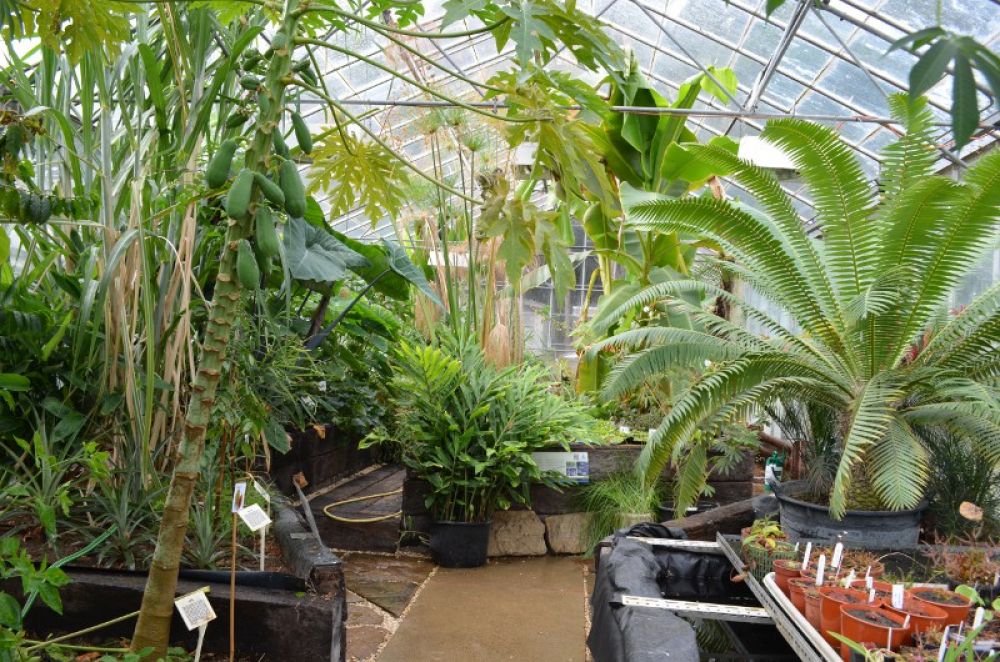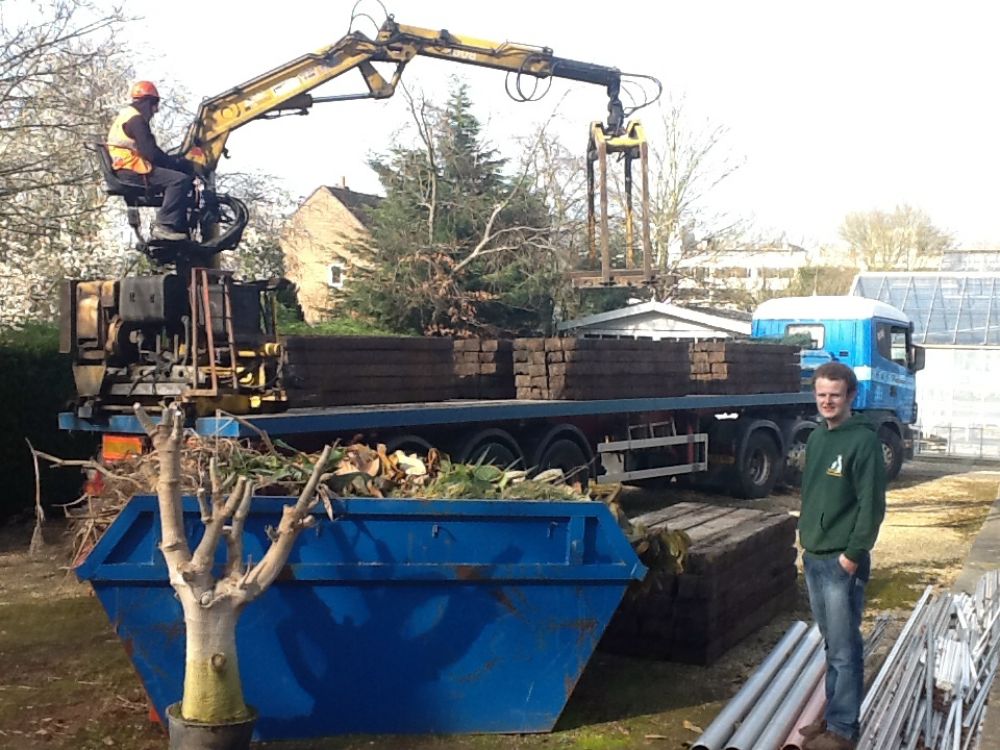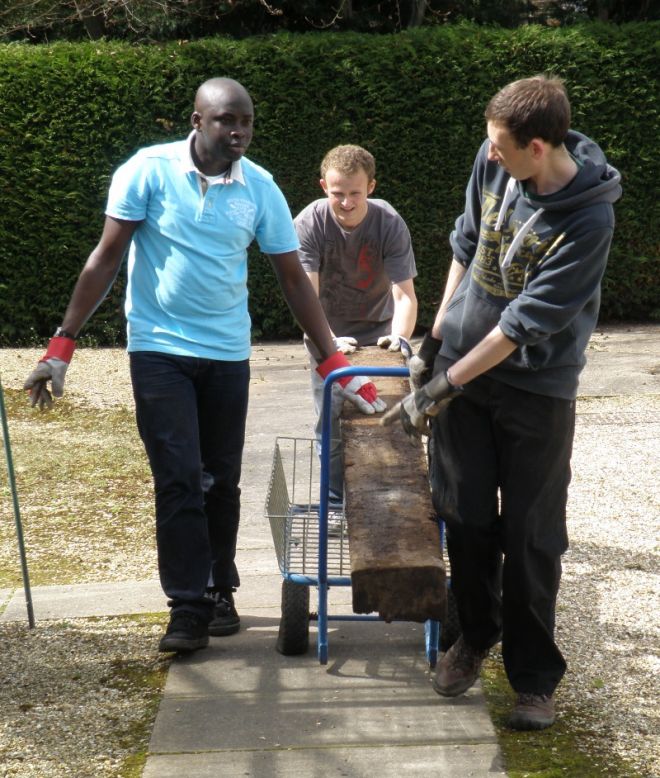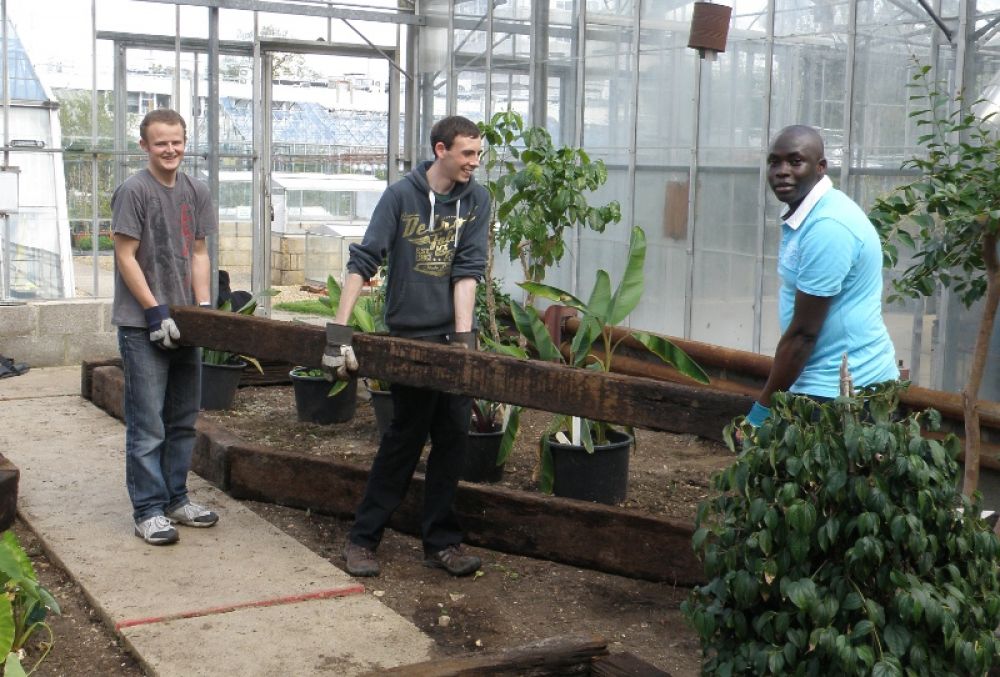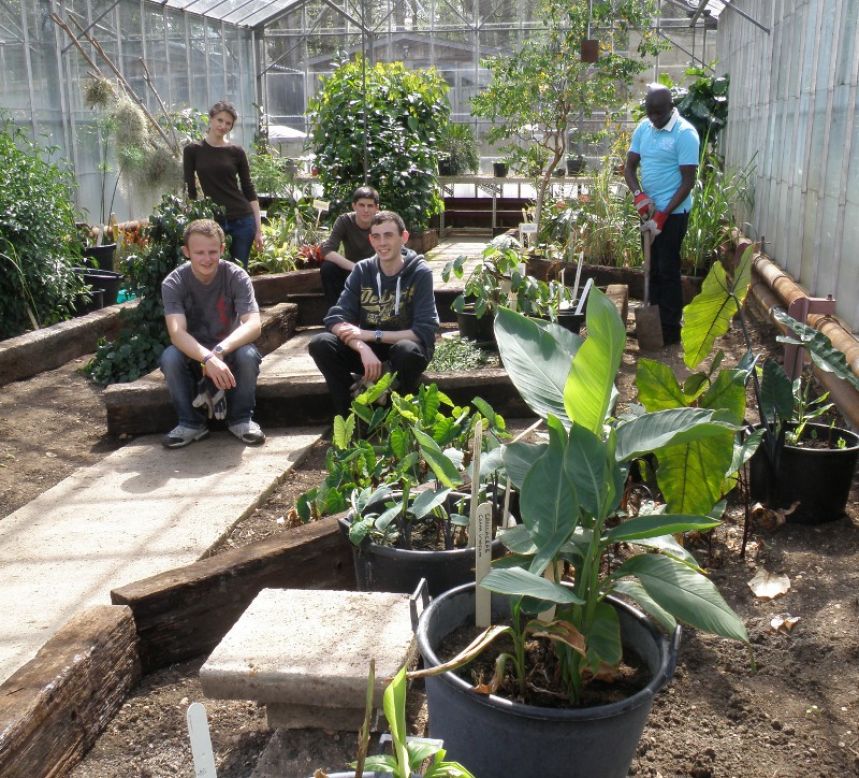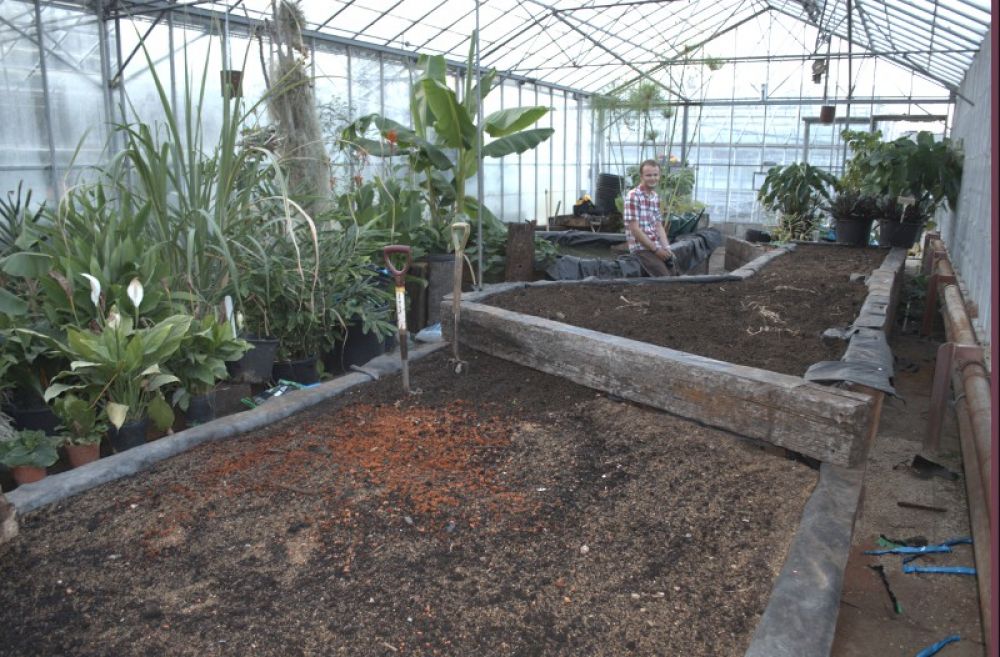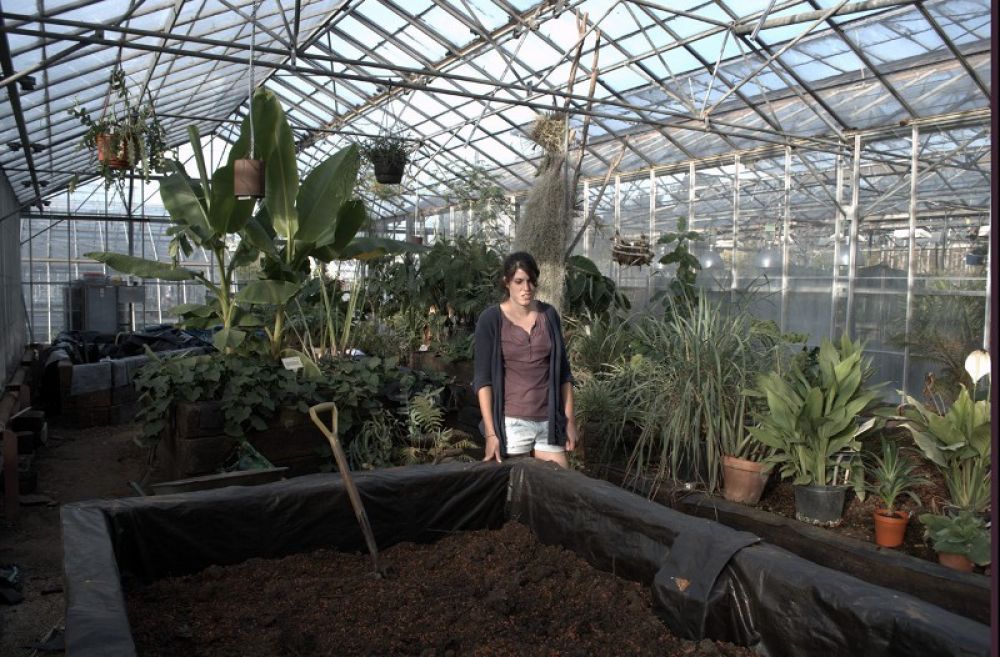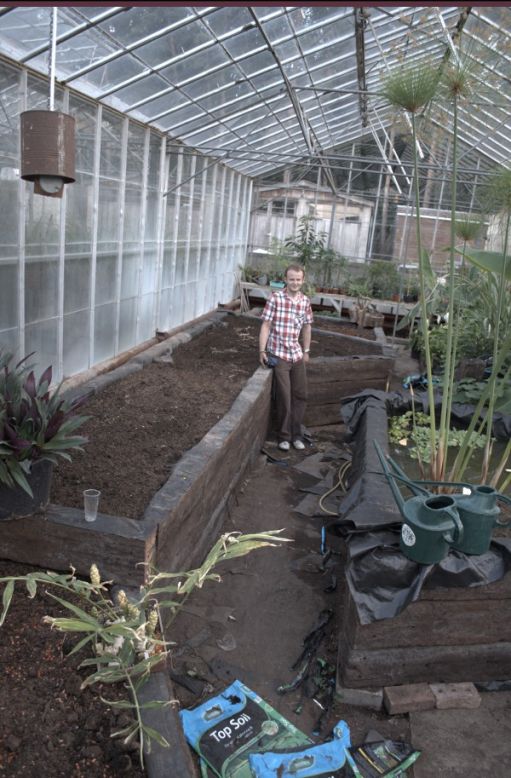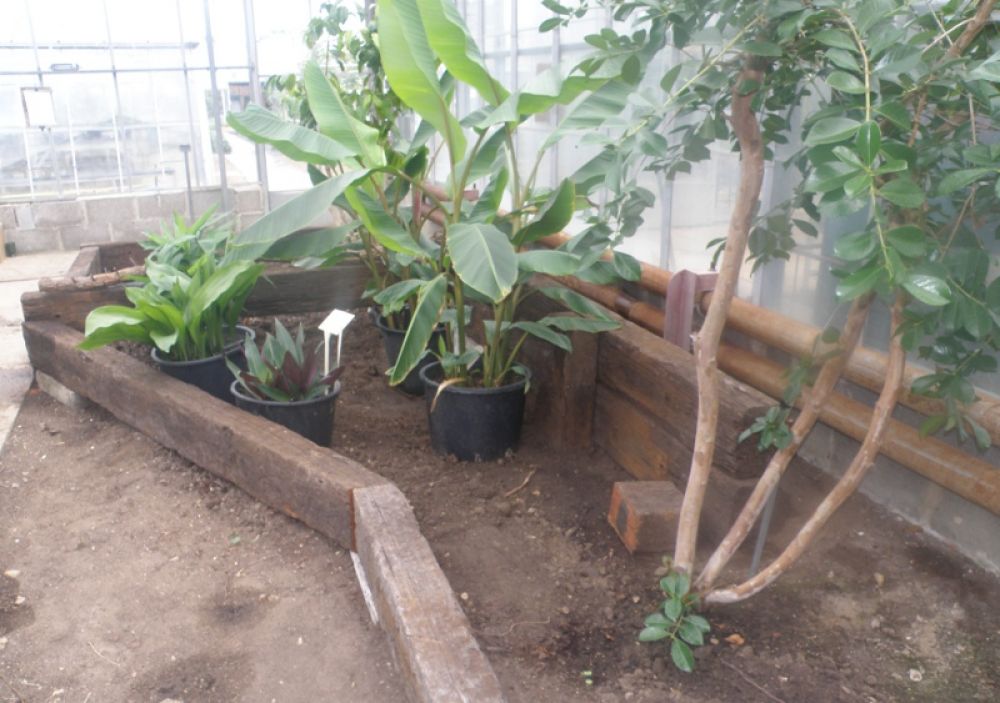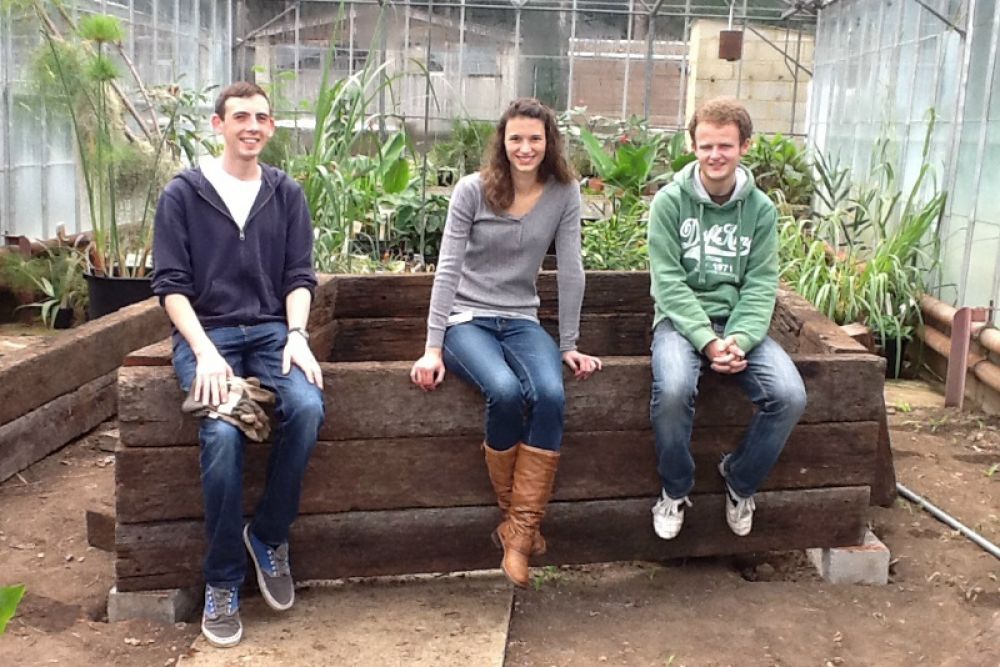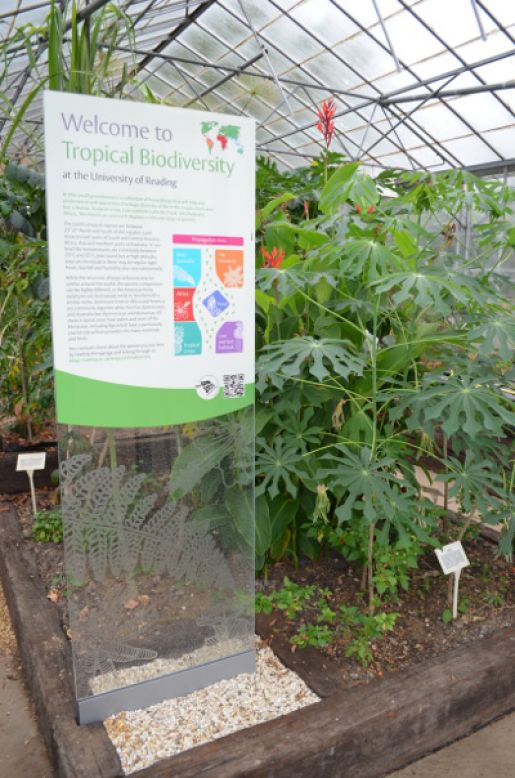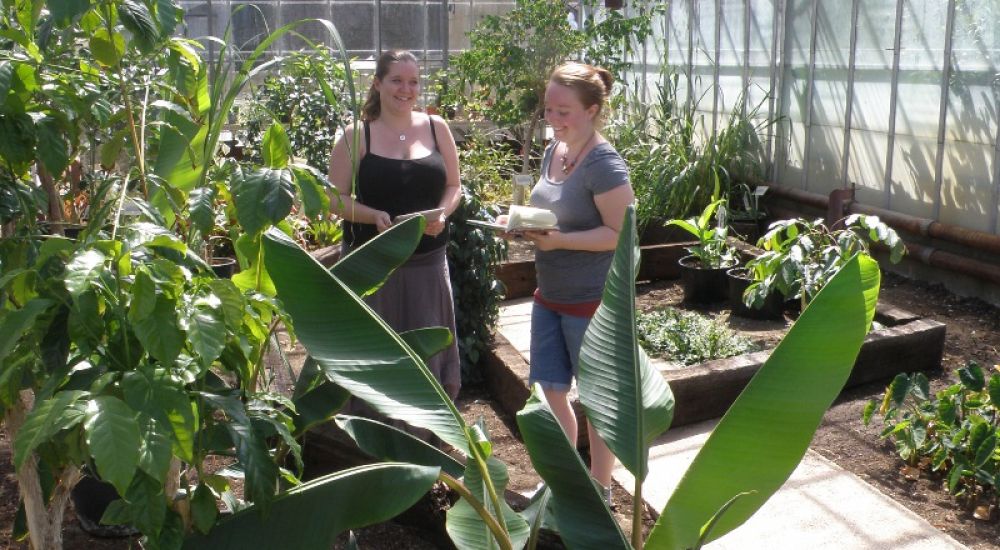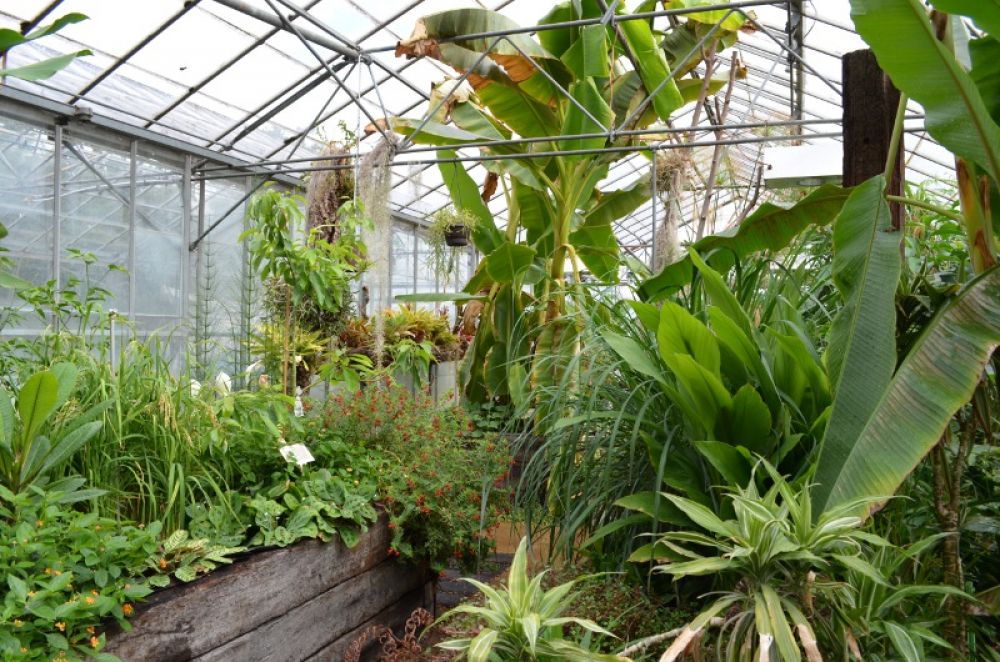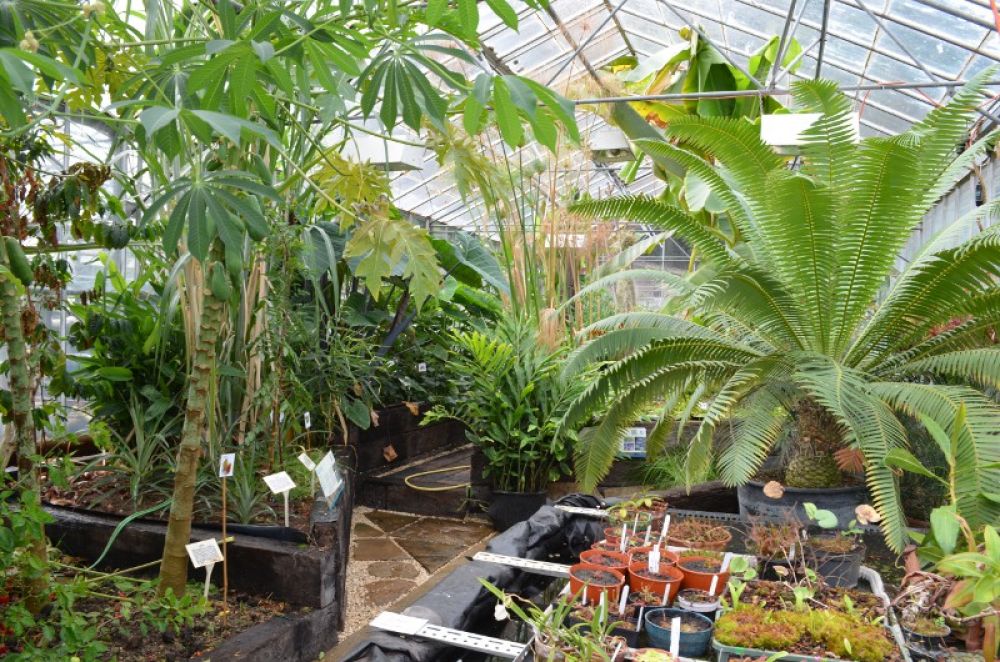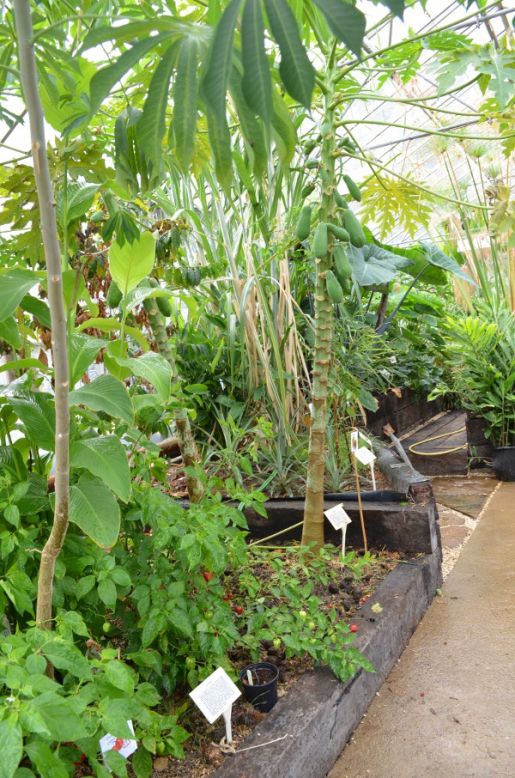Reading University Bio Diversity Project
After many weeks of research, discussion and negotiation we finally have our recycled, untreated hardwood railway sleepers to create the raised beds for drainage and landscaping in the greenhouse. Although the space seems small we needed 120 sleepers to do the job. In the end our supplier was RailwaySleepers.com. who provided Karri railway sleepers at a price we could afford and even found a lorry with a crane to unload and that was narrow enough to fit through the entrance gates to the greenhouse. We now have the materials to start the practical layout of the greenhouse.
I’ve been in discussion with a range of people about the crops we should be growing in our global tropical small holding. There are some obvious species the we know we can grow and we already have: Banana (Musa cultivars), New Cocoyam (Xanthosoma violaceum), Taro (Colocasia esculenta), sugar cane (Saccharum spp.), Yam (Dioscorea spp.), guava (Psidium guajava), Strawberry guava (Psidium cattleianum), coffee (Coffea spp.), black pepper (Piper nigrum), chilli pepper (Capsicum annuum), ginger (Zingiber officinale), lemon grass (Cymbopogon citratus) , star fruit (Averrhoa carambola), papaya (Carica papaya), pineapple (Ananas comosus), achiote (Bixa orellana), Pink banana (Musa velutina), Sweet potato (Ipomoea batatus), Arrowroot (Maranta arundinacea). Crops we should add are: dry rice (Oryza sativa), cassava (Manihot esculenta), rubber (Hevea brasiliensis), oil palm (Elaeis spp.), sorghum (Sorghum bicolor), peanuts (Arachis hypogaea). Although Reading University is a world centre for cocoa quarantine our tropical glasshouse is not kept warm enough to grow Cocoa but we have many plants just a few metres away in specialist growing facilities. Coconuts are off the list we don’t have the roof height needed!
We started moving some of the railway sleepers to mark out the design of the tropical glasshouse planting areas on the ground. There is a world of difference between a sketch on paper and the reality of carrying large hardwood railway sleepers in to place. The railway sleepers were supplied by RailwaySleepers.com who advised that these hardwood and untreated Karri sleepers should have a 20 year lifetime in these conditions
A result of the work was a redesign (by committee) of the layout on the floor to give slightly wider paths and to split the bed on the right hand side of the glasshouse into two separate sections. It was certainly hot work today. After a week of cold weather and rain we were all glad of the dry weather to handle the railway sleepers but it did mean the glasshouse reeally did feel tropical! Val and Julia from the glasshouses and experimental grounds came to look around and were pleased with the first stage of design. Matthew from the workshop is now thinking about the optimal way to install an irrigation system.
Facts
The raised beds contain around 20 tonnes of compost.
More than 100 different plant species are being cultivated.
Alastair Culham
Reading University Tropical Diversity
A professional botanist and biologist with an interest in promoting biological knowledge and awareness to all.
http://blogs.reading.ac.uk/tropical-biodiversity/
RAILWAY SLEEPERS USED
Used Karri railway sleepers
RailwaySleepers.com Says..
A fantastic construction of raised beds using our used tropical hardwood railway sleepers, in a biodiversity glasshouse setting that is both unque, educational & stunning. It has been great to be involved from the very beginning of the project when you were striving to raise funds, and when you visited the railway sleeper yard in search of budget tropical timbers. A fantastic team effort by all of you!

